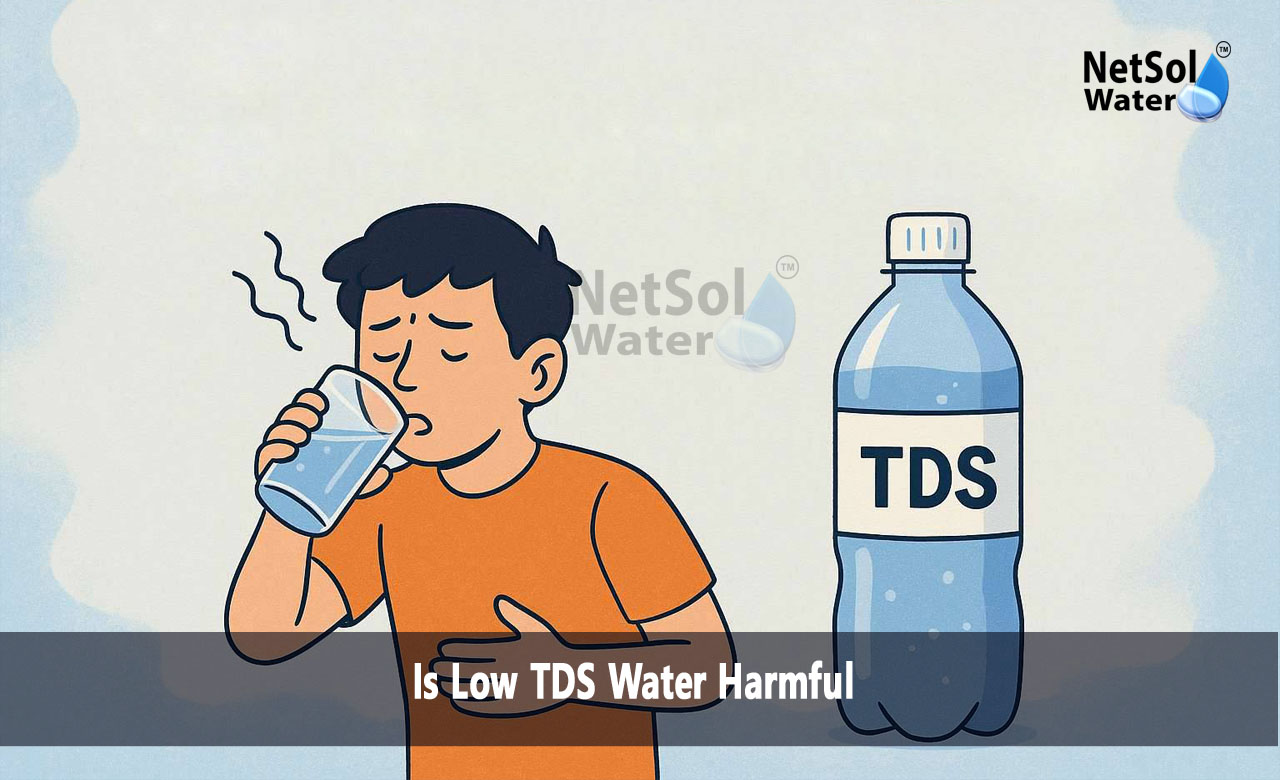Is Low TDS Water Harmful?
Drinking water quality draws strong interest from people wanting clear answers. One key question that occurs often is whether water with very low total dissolved solids poses any risks. Is low TDS water harmful is the phrase many use in searches to find clarity about the safety of water from reverse osmosis or distillation. TDS measures the content of dissolved minerals and salts in water tanks or bottled taps. When filtration removes most minerals we get water with low TDS. Users wonder if this absence can cause nutrient loss or body imbalance.
TDS and Low TDS Water
People benefit from knowing what TDS means and how water falls into low TDS category before linking it to health risk. This context matters because lack of awareness might lead to unnecessary fear or missteps.
What TDS Means?
The term total dissolved solids covers minerals and salts naturally found in groundwater such as calcium magnesium sodium bicarbonates and others. It reflects the amount of material that remains if water evaporates away. Water with low TDS carries very few dissolved solids. Scientific reviews by the World Health Organization note that no health based guideline exists for minimum TDS content. This lack shows that UHN agencies assess other contaminants and treat TDS mostly as an aesthetic or technical measure.
How Low TDS Water Arises?
Water purification methods like reverse osmosis distillation and deionization remove nearly all dissolved solids. Producers design these systems to lower TDS significantly even below one hundred mg/L. Reverse osmosis systems typically rank water under fifty parts per million. Many homes use such purifiers to ensure removal of contaminants and to avoid high mineral residue. The result yields water that tastes flat lacks residual taste but meets strict safety gates where pathogens and chemicals get filtered out.
Health Implications of Low TDS Water
Studies by global health organizations find no scientific data linking low TDS water to mineral deficiency or systemic harm. The Water Quality Association confirms that no public health body has ruled low TDS water unsafe. Real world evidence comes from navy vessels pure water ships space labs and remote bases where people consume water at tens of ppm TDS for months with no records of health deterioration.The WHO early work noted that consuming demineralised water might increase urine output and eliminate electrolytes quickly but these experiments involved extreme conditions and low intake among limited participants. Modern guidance emphasizes that diet supplies most minerals and water rarely contributes significant quantities. Thus the consensus among experts shows minimal health risk for normal adults drinking low TDS water when diet is adequate.\
Taste and Palatability Issues
Awareness about taste effects helps users evaluate whether low TDS water is harmful related to discomfort rather than health. Low TDS water often lacks the natural mineral taste people associate with water quality.
Many people describe such water as insipid or flat. Scientific guidance states that extremely low TDS water causes no flavour and may feel acidic in the mouth. A water sample below one hundred ppm often feels dull. Meanwhile water between 300 and 600 ppm often offers pleasing taste and acceptable mineral presence. These levels vary with personal perception and local mineral makeup. Taste does not equate to health hazard but lack of taste can reduce drinking satisfaction or lead to less hydration. People may connect meter readouts with harm though the discomfort may stem only from blandness not actual toxicity.
Managing Low TDS Water Safely
Knowing how to manage mineral depleted water supports healthy use for families and individuals. Users can ensure safe intake without fearing hidden risk. This approach balances precaution with simplicity.
Regular testing with a TDS meter helps track daily levels after filtration. If readings remain very low around thirty to fifty ppm and diet is poor or suppression of minerals occurs you can consider a mineral cartridge or remineralization filter. Experts note that adding magnesium or calcium at twenty to thirty mg/L and forty to eighty mg/L supports taste and gives small dietary benefit. People with medical conditions or electrolyte loss through sweat should consult a health advisor before drinking only low TDS water. A balanced diet rich in fruits vegetables dairy or plant based calcium and magnesium ensures that water remains only a hydration tool not a main mineral source. In everyday life low TDS water delivers safe fluid intake when paired with nutritious food and occasional mineral topping if needed.
Conclusion:
Global agencies set maximum TDS limits for aesthetic, taste, not minimum required levels for health. Real world cases confirm no long term harm from low TDS water when diet meets normal nutrition needs. Taste issues may arise but these do not translate to biological risk. People seeking safe hydration may continue using purification systems and choose to add minerals if they desire better flavour or dietary balance.
If you want more insights on water quality measurement mineral balance or installation options contact our team today for friendly discussion or request consultation that fits your situation.
Contact Netsol Water at:
Phone: +91-9650608473, Email: enquiry@netsolwater.com



